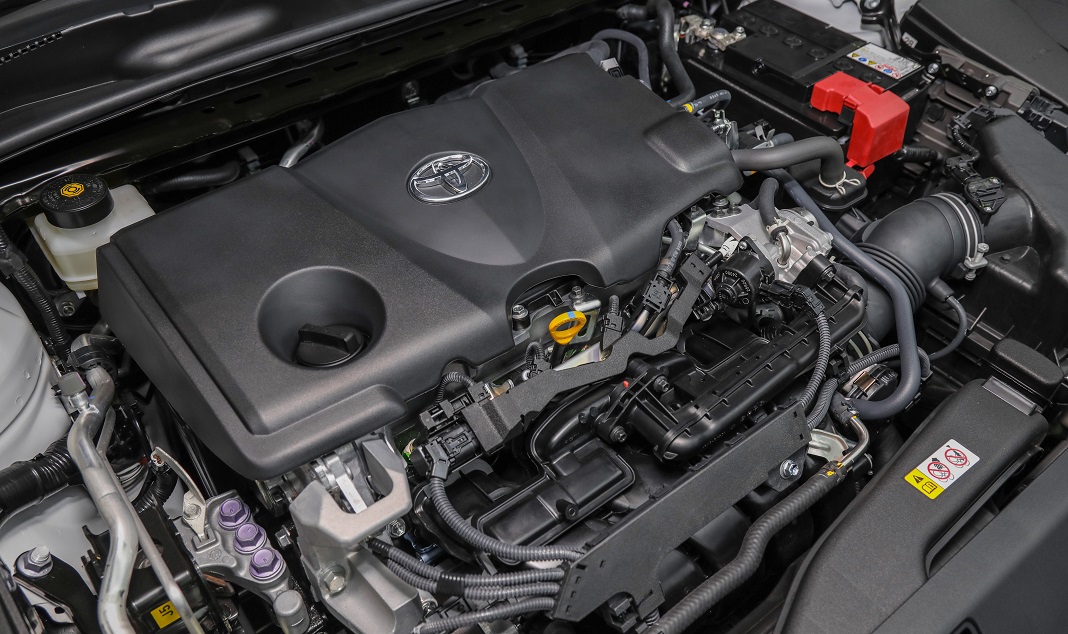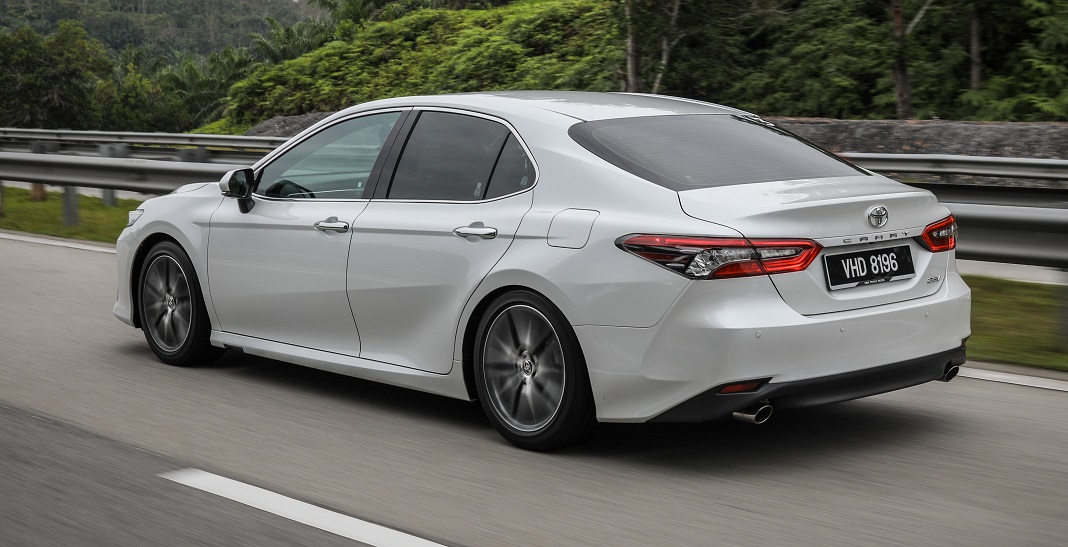 Once upon a time, as your family and career expanded, the logical thing to do would be to trade up from the Corolla to a Camry at the Toyota dealership. The needs of car buyers then were a lot more straightforward – more space, better comfort, maybe a bit more power and it’s good to go.
Once upon a time, as your family and career expanded, the logical thing to do would be to trade up from the Corolla to a Camry at the Toyota dealership. The needs of car buyers then were a lot more straightforward – more space, better comfort, maybe a bit more power and it’s good to go.
Over many model cycles, the Toyota Camry had served as the default choice for many seeking a large sedan. It wasn’t the prettiest to look at, not the most technologically advanced and certainly not the most exciting to drive, but it was well made and the reliability was legendary. Toyota sold millions across the globe till SUVs appeared and redefined what a family car should be.

Mainstream manufacturers committed to making sedans have had to raise their games since, just to sustain the waning interest in three-box saloons. The eighth generation Camry that debuted globally in 2017 saw its boldest departure yet from the tried-and-tested formula – this was a Camry that didn’t look like its predecessors, one that oozed style and made you wonder if you were looking at a Lexus instead.

A Toyota in Lexus clothing
One of the hallmarks of a successful car design is how well it ages, to my eyes, this eighth generation Camry barely aged a day since it showed up in Malaysia in late 2018. It’s no wonder that Toyota has largely left the exterior unchanged bar a few details in this mid-life update; the new 18-inch alloys in dual-tone finish look dapper, the slats on the massive front intake have been slimmed down and finished in a darker hue for a more subtle appearance, and the rear tail-lamp covers have a darker tint, that’s about it. Why mess with a beautiful thing, right?

The cabin also looks unchanged at a glance, but there are a few noteworthy enhancements, one being the revised centre dashboard which now bears a ‘floating’ 9-inch tablet-like touch screen and redesigned air-con vents as a result (the previous 7-inch item was integrated into the dash). While the larger infotainment display is welcomed, its screen resolution is mediocre at best, which makes the dated UI look even clunkier than before. Fortunately, you can sidestep most of that as Android Auto and Apple CarPlay connectivity (wired) are now standard.

But if you need any indication that Japanese D-segment sedans have indeed moved upmarket (price aside), look no further than the powered reclining function found on the Camry’s comfy rear seats, the adjustments of which is executed in style via a touch console housed on the rear armrest. Yes, a new Camry now costs nearly RM200,000, but you’ll be hard pressed to find these luxurious appointments in vehicles twice its price, let alone those in the same price bracket.

In fact, if you consider the comprehensive suite of active safety features that comes standard on the facelifted Camry, which includes active cruise control (from idle up to 180km/h), lane keeping assist, rear cross traffic braking, even object detection with intervention, that RM200k price tag suddenly looks a lot more palatable.

And it must be pointed out that the driving aids performed seamlessly over the day-long media drive, whether in keeping the Camry centred on its lane during a highway cruise or maintaining a sensible distance and speed to the vehicle up front. The challenge of semi-autonomous driving tech lies in the calibration; is it too intrusive, are there false triggers, does the user trust the system? Toyota’s implementation in the Camry is right up there with the premium brands – intuitive to use and inspires confidence.

No Turbo, no problem
Of course, the main talking point of this mid-life update is the Camry’s new powertrain. It’s not ground-up new per se for Toyota models in Malaysia as the RAV4 already offers the same engine and transmission combo, but it’s new for the Camry and quite frankly, a much-needed spec bump that a flagship sedan deserves.

As exciting as the name may sound, the Dynamic Force naturally-aspirated 2.5-litre four-cylinder is more about efficiency than sheer performance. Toyota touts a hybrid-like thermal efficiency of 40% whereas typical internal combustion engines out there are averaging around 30%. For context, a 2020-spec Formula 1 hybrid power unit achieves 50% thermal efficiency, so 40% is mightily impressive for a production combustion engine, and that helps the Camry achieve 14.7km per litre on the combined cycle, an improvement of 8% over the pre-facelifted car, says Toyota.

The gains aren’t just solely attributed to the engine as there is now a new 8-speed automatic mated to it. Naturally, more gears allow for wider ratios but the lock-up range – when the engine is driving the transmission directly – is also superior over the previous 6-speed ’box, all of which further contribute to the overall efficiency of this new drivetrain.
The buff of 25hp and 18Nm to make 209hp and 253Nm in total output not only catapults the Camry into the company of ‘over-200hp’ executive saloon, but in terms of real-world performance, it eradicates the lethargic throttle response of the pre-facelifted car while offering a more linear and sustained acceleration across the rev range.

Otherwise, the new engine’s mechanical refinement remains high, it revs just as smoothly as before and even sounds similar to the previous four-cylinder, notwithstanding a new cylinder head design with direct injection, electric variable valve timing and a compression ratio of 13:1. The more perceptible difference here probably comes from the new 8-speed auto as the reaction to throttle inputs and flicks of the steering shift paddles (new addition for this facelift) is noticeably quicker than before.
 So while no one really sets out to buy a Camry for its dynamic abilities, but like recent Toyota offerings underpinned by the TNGA platform, this updated Toyota flagship saloon is as pleasing to operate and it is to be driven in, if the unpublishable speeds with which the media convoy swept through the challenging bends of the Karak highway were any indication.
So while no one really sets out to buy a Camry for its dynamic abilities, but like recent Toyota offerings underpinned by the TNGA platform, this updated Toyota flagship saloon is as pleasing to operate and it is to be driven in, if the unpublishable speeds with which the media convoy swept through the challenging bends of the Karak highway were any indication.
 Where past Camrys majored in comfort and space (and not much else), there is now a sense of balance. I wouldn’t go so far as to describe the driving experience as ‘sporty’, but you get composed road-holding to go with the ride comfort from its fully-independent suspension set up (double-wishbone at the rears no less), a far cry from the days when a Camry handled like a boat. Heck, it even stopped well with very little body movement and offered a brake pedal feel that’s reassuringly firm.
Where past Camrys majored in comfort and space (and not much else), there is now a sense of balance. I wouldn’t go so far as to describe the driving experience as ‘sporty’, but you get composed road-holding to go with the ride comfort from its fully-independent suspension set up (double-wishbone at the rears no less), a far cry from the days when a Camry handled like a boat. Heck, it even stopped well with very little body movement and offered a brake pedal feel that’s reassuringly firm.
Uncles having the last laugh
As a car which enthusiasts love to hate, the Camry is often associated with a particular demographic dubbed ‘uncles’, presumable due to its lack of style and performance even though not every owner of a Camry is male and of an advanced age.

With the eighth generation Toyota Camry, now made finer with this mid-life update, I can imagine the ‘uncles’ are probably having a chuckle because the Camry has turned into a handsome, sophisticated and thoroughly enjoyable executive saloon. If you’ve been quietly admiring one from afar, don’t be shy and take it out for a spin, you might just fancy one over the many faceless SUVs out there.
Likes: Looks sharp, new engine, good ride and handling package
Dislikes: Infotainment UI looks dated, middle rear seat is awkward to sit on
Toyota Camry 2.5V
Price: RM199,109.50 (50% CBU SST exemption) Engine: 2.5-litre 4-cyl inline, FWD Output: 209hp and 253Nm Transmission: 8-speed auto Performance: 0-100km/h in 9.0 seconds (estimated); top speed 210km/h (estimated) Wheels/tyres: 235/45 R18 Safety: 7 airbags, Toyota Safety Sense w/ Dynamic Radar Cruise Control, Pre-Collision System, Lane Tracing, Rear Cross Traffic Braking Warranty: 5-year/unlimited mileage
















